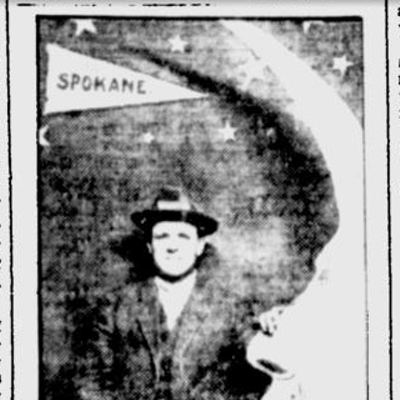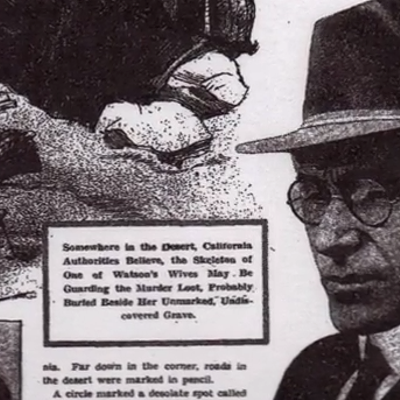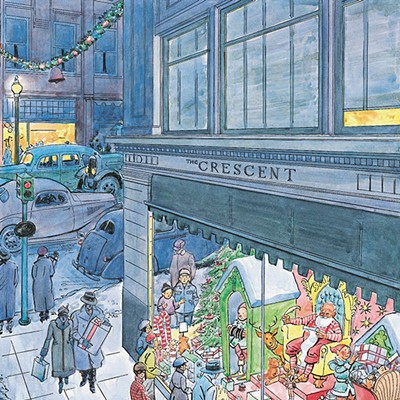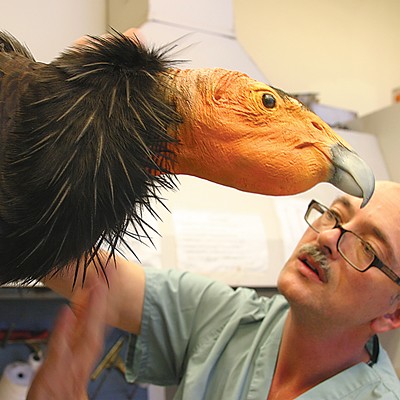Quick, name a famous Canadian in history. (Sorry, Neil Young and Michael J. Fox don't count.) Stumped? You're not alone. Most of us Americans are woefully ignorant of our northern neighbors. History, geography, commerce — it all unfolds a mere 100 miles away, and yet we scarcely notice.
Take, for example, the subject of The Mapmaker's Eye, opening Saturday at the MAC. The exhibition tells the story of David Thompson, the explorer, naturalist, geographer and fur trader who did more than anyone else to fill in the spaces labeled terra incognita on early maps of North America. During his long career with both the Hudson's Bay Company and the rival North West Company, Thompson traveled some 55,000 miles and created the definitive map of northwestern North America, including much of what's now Washington, Idaho and Montana. And yet most Americans have never heard of him.
"What's interesting to me is that Thompson is lesser known than Lewis and Clark, but he actually spent a great deal more time here getting to know the native people, the flora and fauna, the languages, and doing all this mapping that Lewis and Clark weren't on a mission to do," says Marsha Rooney, curator of history at the MAC who organized the exhibition. "It also brings in the connection with Canadian and British history that often gets left out when Americans focus on American stories."
Indeed, in American history books, Lewis and Clark get credit (or blame, depending on your perspective) for opening up the Pacific Northwest to further exploration and trade — and for the flood of homesteaders from points east who came a few decades later. Yet before the Corps of Discovery set out to find a trade route to the Pacific, Thompson was hiking, snowshoeing and canoeing his way across this vast swath of land. He mapped out routes across the lake-dotted woodlands from Hudson's Bay to the Missouri River, visiting the Mandan villages on the Missouri that would later host Lewis and Clark. There, he calculated the latitude and longitude of the village, readings that were disputed and later accepted by William Clark. Thompson also was the first surveyor to accurately note the source of that most American of rivers, the Mississippi.
"What's fascinating is how these explorers' information was gathered by subsequent explorers," Rooney says. "Whether they had their maps published or whether it was word of mouth or a written report, they knew what the others had done. What they knew sometimes wasn't accurate [or complete]. But they knew it. There was this word of mouth, this system for knowing what somebody else had done, even in different national realms."
Thompson successfully crossed the Continental Divide in what's now Alberta in 1807, just a year after Lewis and Clark had returned from their journey. Four years later, when Thompson traced the Columbia River from its source to the new settlement at Astoria searching for a shorter trade route for his company's furs, he built upon the knowledge acquired by the Americans.
"Thompson knew exactly what Lewis and Clark had done," says Rooney. "Before their work was published, he knew they had come down the Snake River to the confluence with the Columbia."
Rooney has been working on The Mapmaker's Eye for more than three years, doing research and tracking down artifacts to tell Thompson's story. Local author Jack Nisbet, whose 1994 book, Sources of the River, traced Thompson's journey along the Columbia, contributed to the research and updated his own work with a new volume on Thompson, just out from WSU Press. (See excerpt, page 20.) The Smithsonian lent surveying tools like those used by Thompson, as noted in his journals and in the records of his employers. The MAC's own collection of artifacts from the fur trade and from the people of the Plateau region helps fill in the context. But the big "wow" of the exhibition is Thompson's own field journals, on loan from the Archives of Ontario in Toronto.
"He's a real keen observer of people and their mores," Rooney says of the journal entries, "but at the same time he's an explorer and he's taking all these sextant readings everywhere he goes. These journals are just unbelievable to look at."
Rooney says she gleaned information from Thompson's notes that disputes the stereotype of the explorer as a rugged individualist.
"What struck me is that there is a system for exploration at that time. It isn't just one lone man going out with a backpack. People don't just arbitrarily set out. The companies funded it, but there were also systems for gathering a crew so that you'd have the expertise you needed."
"This isn't trying to demythologize," she adds. "It's just trying to add complexity to the story and get people to think more broadly. And Thompson is a great character because he is so multi-disciplinary — his business sense with the fur trade, his people-sense in observing, his ability as a naturalist and geographer. He's fascinating because he touches on so many different worlds. And we tried to reflect that in the exhibit by including maps, journals and sketches."
For all his many skills, Thompson was not an artist, so he left no visual record of what he saw in his travels. A handful of artists — including Henry James Warre, Paul Kane and Gustavus Sohon — followed in his footsteps in the 1840s and 1850s and sketched what they found. Since the landscape of the Northwest had not changed much in the intervening decades, their work matches closely with the written descriptions found in Thompson's journals. Rooney and Nisbet located collections by these artists and several sketches are part of the exhibition.
"I wanted to use things that were field works," she says. "We're looking at [Thompson's] raw material [in the journals], not edited versions, so I wanted the art to feel the same. It's the first glimpse, the first impression — not the painting that was completed in the studio afterwards."
Thompson used the technology of his era, but his problems were not all that different from those faced by anyone planning a trip to the backcountry. If he were alive today, he'd probably record his thoughts in a blog, use a GPS device to establish his position and communicate via satellite uplink or cell phone.
"There were issues that [Thompson and his crew] had to take care of, and they're issues that we would have to figure out now, too, if we were planning an expedition," Rooney says. "We have to think about the same things. We just resolve them in different ways, which is what history is all about."
Later in life, Thompson worked on the Boundary Survey to locate the border between the United States and Canada. Based on his earlier travels over the Columbia Plateau, he advocated including much of present-day Washington, North Idaho and western Montana within Canada. (Of course, no one asked the Flatheads, the Blackfeet and the Spokanes what they thought.) Canada and the United States eventually compromised on the 49th parallel as the international boundary. Still, if Thompson's opinion had prevailed, we would all be Canadians.
Time to get cracking on those lessons. After all, it's our history.
The Mapmaker's Eye runs from Oct. 8-Sept. 3, 2006 at the Northwest Museum of Arts & Culture, 2316 W. First Ave. The MAC celebrates the opening of the exhibit with a Family MACfest, which runs from noon to 3 pm on Oct. 8. At 3:30 pm, the one-man play York will be staged, depicting the experiences of William Clark's slave. Cost: $10 per family. Call 456-3931.




















